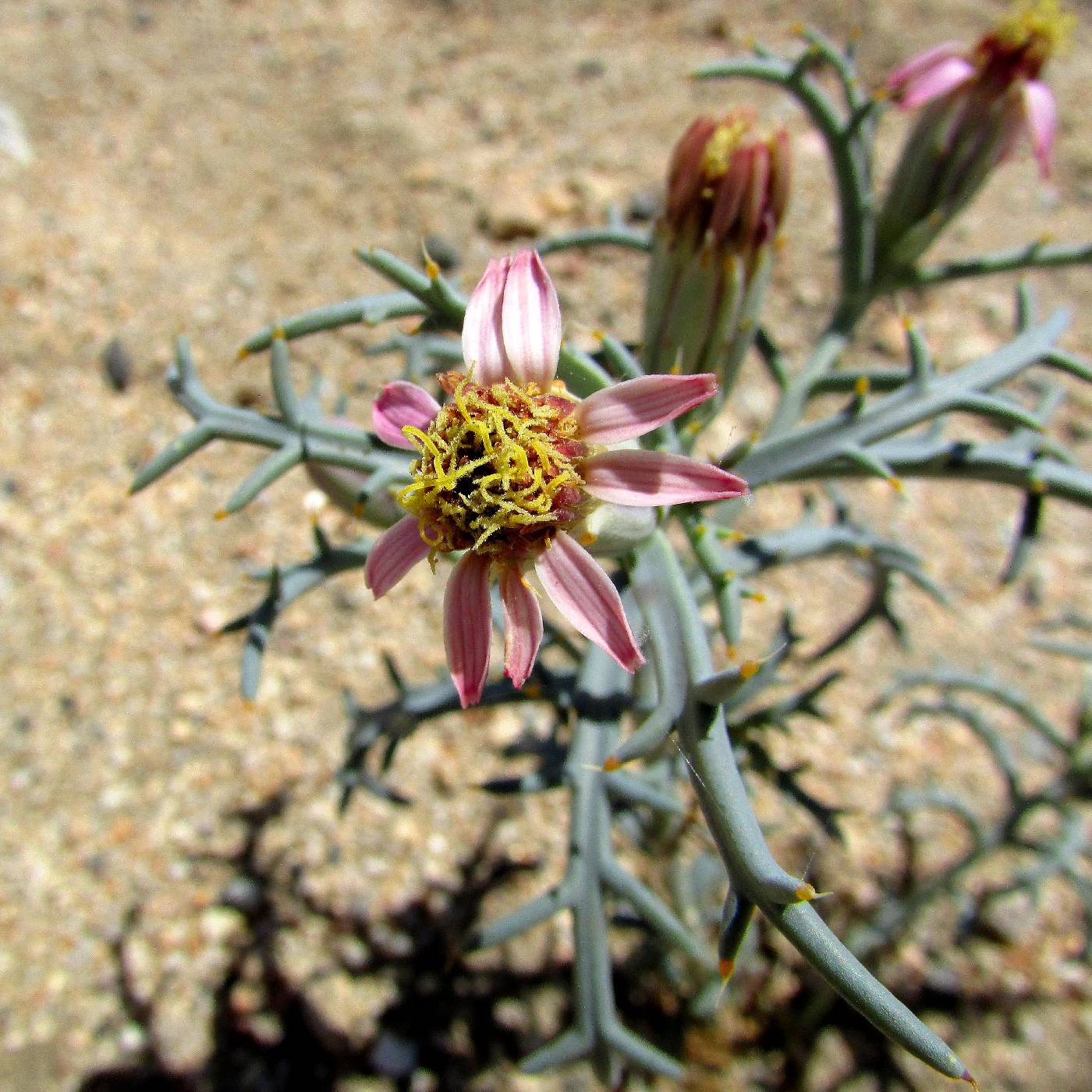
|
Family: Asteraceae |
Annuals or perennials, (5-)10-50 cm, often glaucous. Stems erect or spreading, branched from bases or throughout. Leaves cauline; mostly alternate (1-4 proximal pairs opposite); blades mostly 1-pinnately lobed (lobes usually 3-11, bristle-tipped), ultimate margins entire, faces glabrous (often glaucous, oil-glands subterminal). Heads radiate, borne singly. Calyculi of 2-6 deltate to lanceolate bractlets (each usually bearing 1-5 oval to linear oil-glands). Involucres campanulate to turbinate or fusiform, 4-8(-10) mm diam. Phyllaries persistent, 6-12 in ± 2 series (distinct to bases, lanceolate or ovate to linear, most bearing 1-5 oil-glands). Receptacles convex to conic, ± pitted, epaleate. Ray florets 7-12, pistillate, fertile; corollas whitish with pinkish to purplish stripes. Disc florets 15-100+, bisexual, fertile; corollas yellow or purplish or whitish, tubes much shorter than cylindric throats, lobes 5, deltate to lanceolate. Cypselae clavate, sparsely puberulent (hairs usually reddish); pappi persistent, of 5(-6) fascicles of 7-15 barbellate bristles subtending and alternating with 5(-6) lanceolate, 1-aristate scales. x = 10. Nicolletia trifida Rydberg is known from Baja California and Baja California Sur, Mexico.
|
This project was made possible in part by the Institute of Museum and Library Services [MG-70-19-0057-19].
Powered by Symbiota



